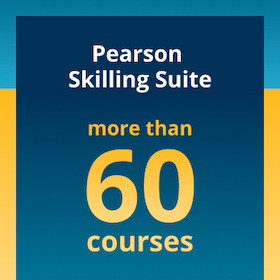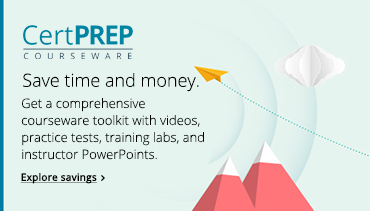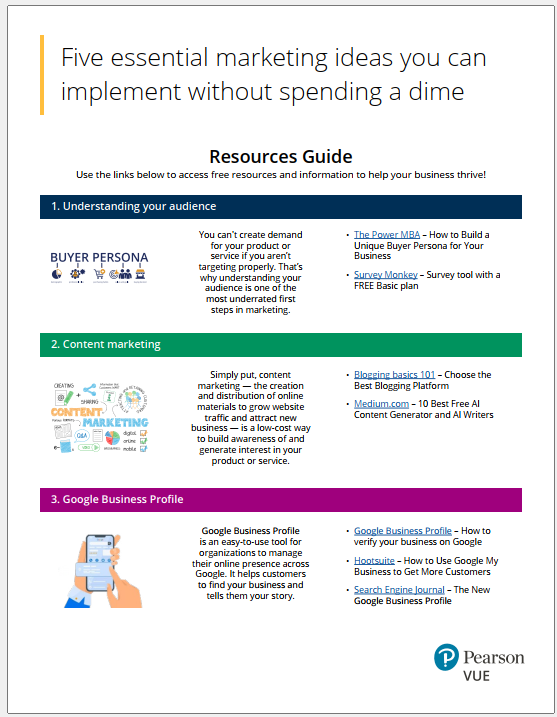In our last blog, we discussed the first three of five no-cost tactics you can use now to enhance your marketing plan.
This blog covers the final two, which include the all-important challenge of optimizing your search results and creating an email marketing campaign. Plus, we’ve included a bonus tactic!
4. Optimize your search results
Once you’ve finished the hard work of understanding your audience, setting up a content marketing program, and refining your Google Business Profile — all discussed in our last blog — it’s time to make your business punch above its weight in Google search results.
This is called Search Engine Optimization (SEO). Its goal is to get your site ranked as high as possible by search engines. The payoff is something every business owner knows and appreciates: free advertising!

Studies show the higher your site ranks on search results, the more clicks you’ll receive, as the example here shows.


The site that ranked first on this search got 28.5% of the clicks, while the #10 site got just 2.5%. That's a huge incentive to be number one. And most people never look past the first page of search results at all. Here are four high-level SEO moves you can make now:
- Find the keywords you want to rank for. Put yourself in your customers’ shoes and imagine you're looking for your service. Which keywords would you use to find your business?
- Once you find those keywords, use Google Trends. This tool will help you see how much volume those words are receiving, so you can optimize your website for words people are actively looking for. The goal is to find a handful of keywords you want to rank for, try to group them together, and then work them in to the pages on your site.
- Update your page descriptions, titles, and on-page content for each page of your site. The goal is to get the keyword you're trying to optimize in your title. You also want to make sure that the meta description — the hidden copy on your pages that tells Google what to display when your page comes up — contains the most important description of your site.
- Include the keywords you’re trying to rank for in the copy for your site. Try to use them naturally within the text or captions on each page.
5. Launch an email marketing campaign
Email is one of the most cost-effective marketing tactics available. It can be extremely affordable, allows you to reach an interested audience, and is easy to measure effectiveness.
Here are five steps to get you started:
- Examples could be growing your contact list, increasing your leads, or nurturing long-term customers.
- Look at your current contact list—how much can you reasonably grow it each month? Use that as a goal.
- Simply pick a number of emails you want to send, such as one monthly newsletter or one follow-up to every event you attend.
- Or maybe pick a number of leads you want to send to sales.
Step 2. Choose a provider that supports those goals.
There are many email providers out there, and a lot of them have free or low-cost options. Opt for one that meets your goals.
Step 3. Build your database.
Your database is simply the number of people you can email. Growing that list should be a priority for almost any business.
- Your current customers are a great place to start. To broaden your reach, you could add email opt-ins on your website or create pop-ups. You could also use gated content, such as opt-ins on your e-Commerce or order confirmations. If you attend events, you could collect opt-ins there. You can even ask your social media followers to opt-in.
- However you build your database, be sure to follow the email and opt-in laws of the countries in which you’re marketing. And make sure you build it with the right people—people who are good candidates for the services you offer.
Step 4. Write your email.
Your message should be targeted and purposeful.
- What are you offering? How will it help your reader? What do you want them to do?
- Make sure your emails contain information your customers actually want — things like monthly specials and offers, tips on career progressions, or next steps in their educational or certificate journey.
- Finally, make sure your email looks professional and defines who you are as a company and brand.
Step 5. Test and refine.
Find out what's working, change what doesn't, and track what you change.
- If an approach isn’t working, find a way to test it. If people aren't opening your emails, change your subject line. Or change the send date or send time.
- If people aren't clicking your links, try moving them to the top. Consider making the font bigger or make it obvious it’s a link.
- As you try new aspects, track your success. You should be constantly changing things to find what people respond to. Then repeat what works and eliminate what doesn’t.
BONUS TIP! Low-cost online advertising
While the first five topics covered were all things you could do for free, online advertising will require at least a small investment.
However, it’s such a low-cost way to drive leads, you should seriously consider it. And you don’t need an ad agency to run digital ads. There are plenty of platforms that make it easy to do yourself.
Online advertising is where you really reap the benefits of the work you put into understanding your audience. It will reveal right away, for example, which social media channel your audience uses, so you can start posting. And no matter who your audience is, it’s a safe bet they’re using Google search.

So if the search terms you’re trying to rank for are highly competitive and your business is not coming up in the organic search results, consider using Google search ads. Google makes it easy to execute search ad campaigns. All you need is a good chunk of time … and a credit card!
The concept is simple: You figure out which keywords you want to bid on and then create text-based ads that speak directly to those words. If you bid high enough, your ads will appear right above the search results—a big win for your business! See the Resources Guide below that walks you through the process.
Retargeting is another great tactic for reaching your audience. We’ve all seen retargeted ads after we’ve clicked on a product we like: Ads follow us everywhere, encouraging us to finish the order. They may be persistent, but they really do work!
Google, Facebook and LinkedIn are all platforms you can use for retargeting, but Google usually has the lowest cost — as low as $1/thousand impressions, a good rate for online advertising.
It may seem daunting at first, but just get started and you may surprise yourself!
Read part 1 of this blog, where we cover understanding your audience, the emergence of content marketing, and the value of a Google Business Profile.






